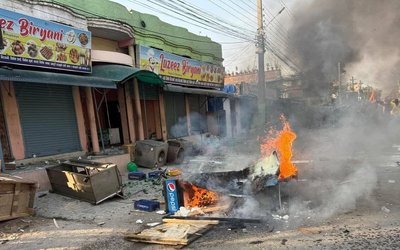Nepali government recently announced it is working on universal health coverage. This is very welcome news because most health care in Nepal is paid out- of- pocket. Catastrophic health care expenditures are a major cause of many Nepali families seeking debt and being mired in poverty.Three examples illustrate the problem. Twenty year old ShitalRai was all smiles that morning during medical rounds. Three days ago atKhotang in eastern Nepal, he had high fever and rapidly became somnolent. His relatives, fearing the worst helicoptered him to Patan Hospital where he was diagnosed with meningitis, treatment was promptly instituted, and he rapidly recovered. If he had been in Khotang without treatment, he may well have deteriorated and died.His family paid about one lakh of rupees for the helicopter ride and about ten thousand rupees for the hospital treatment of meningitis. Fifty five year old KanchiMaharjan had been nauseated and drowsy for weeks until her family took her to a hospital where she was diagnosed with chronic renal failure. Hemodialysis( cleaning the impurities in the blood) was begun, and she became alert and well- oriented. The change was incredible. Unfortunately the improvement was only temporary if she did not continue to have at least 2 dialysis sessions a week( for the rest of her life) which easily cost 20, 000 rupees a month. Finally, 55 year old taxi driver, Kumar Babu suffered a heart attack while driving his taxi, but after the diagnosis was made, he had no moneyleft ( about one lakh of rupees was required) for the definitive treatment of stent placement in his blocked heart vessels.
What is to be done to deal with these practical health problems in Nepal ?
Political will is essential and it seems to be forthcoming with the recent announcement. The entire population should be covered by a universal health insurance package withfinancing from a combination of public, employer, and private sources. The problem is so stark and universal that everyone needs to be involved including, the patient, the patient’s employer, philanthropic organizations, and of course the government. Till now for most catastrophic illnesses the government has only been looking after high-class politicians and well-connected people who in the first place may have been able to afford the treatment. This exclusive help to certain people was certainly available during the king’s era, but with a communist government in place the wealth in terms of proper distribution during sickness has certainly not taken place. Only lip service has been rendered. This is sad but is onlyone instance of promises being made without any hint of delivery.
Cost-effective interventions should include health promotion and disease prevention. Government spending on health should be increased. A comprehensive health information and surveillance system needs to be instituted. A national network of pharmacies for generic, low-cost drugs needs to be available. Finally consensus- building mechanisms ( for example with debates hosted by the engaging Narayan Shrestha involving government, civil society, health professionals, academia, private sector, and the media) needs to be promoted.
All arduous tasks; but if we don’t start now( and thank God the government is at least making the right noises about universal health coverage for the first time) many individual Nepali families will continue to suffer and be emotionally torn between financial survival andseeking debt to pay the bills for a loved one with a catastrophic illness.















